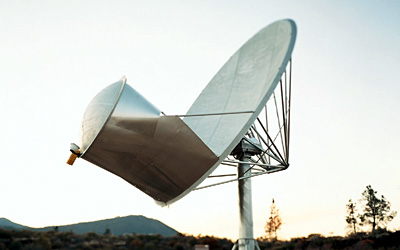
Paul Allen has committed $13.5 million to support the construction of the first and second phases of the Allen Telescope Array (the ATA-32 and ATA-206), the world's newest multiple use radio telescope array. The ATA will eventually consist of 350 - 6.1-meter dishes (ATA-350), when construction is completed late in the decade. The announcement was made today by Thomas Pierson, chief executive officer for the SETI Institute, a leading astrobiology institution with the mission of exploring the origin, nature and prevalence of life in the universe. The ATA is a partnership between the SETI Institute and the Radio Astronomy Laboratory of the University of California, Berkeley (RAL).
Mr. Pierson also announced that the ATA-32 will begin conducting scientific investigations by the end of 2004, significantly earlier than planned, after $11.5 million of research and development funding and three years of successful R & D by the SETI Institute and RAL.
With the successful completion of the grant terms, funding provided by Mr. Allen will total $25 million, one of the largest gifts ever made to a private scientific endeavor.
The ATA will be a general-purpose radio telescope that will provide fundamentally new measurements and insights into the density of the very early universe, the formation of stars, the magnetic fields in the interstellar medium, and a host of other applications of deep interest to astronomers. At the same time, this 21st Century radio telescope will also have the capability to search for possible signals from technologically advanced civilizations elsewhere in the galaxy.
The array will be built in phases, with a 206 iteration following the ATA-32. The ATA uses a novel combination of mass production and specialized technology.
Construction of the ATA is underway at the Hat Creek Observatory, 290 miles northeast of San Francisco on a site operated by RAL. The Hat Creek Observatory is located in an area that is radio quiet, thereby reducing the level of interfering signals from man-made sources.
Dr. Jill Tarter, director of SETI research at the Institute, is the ATA project leader. She joined the SETI Institute in 1984 and later became its chief scientist.